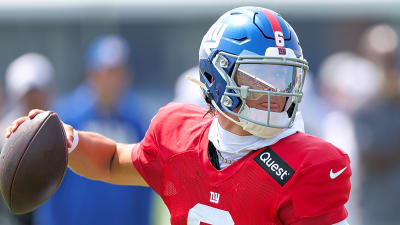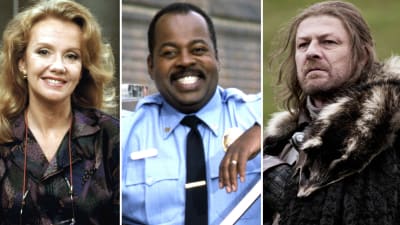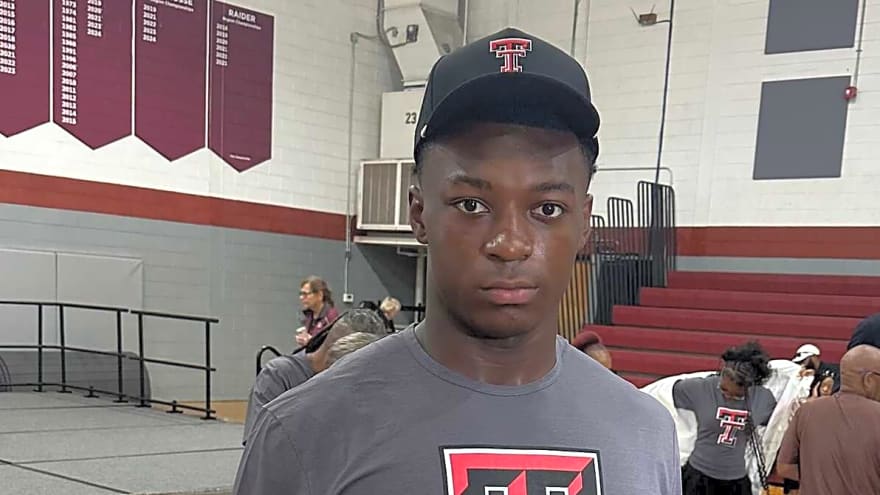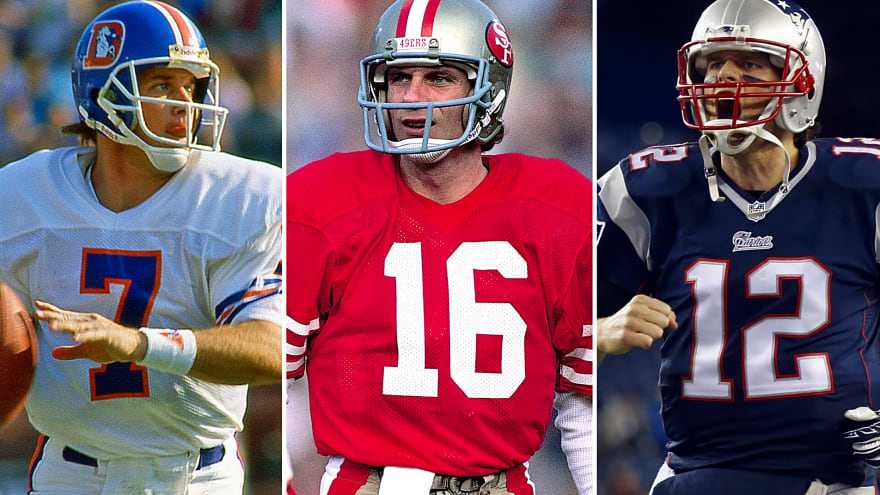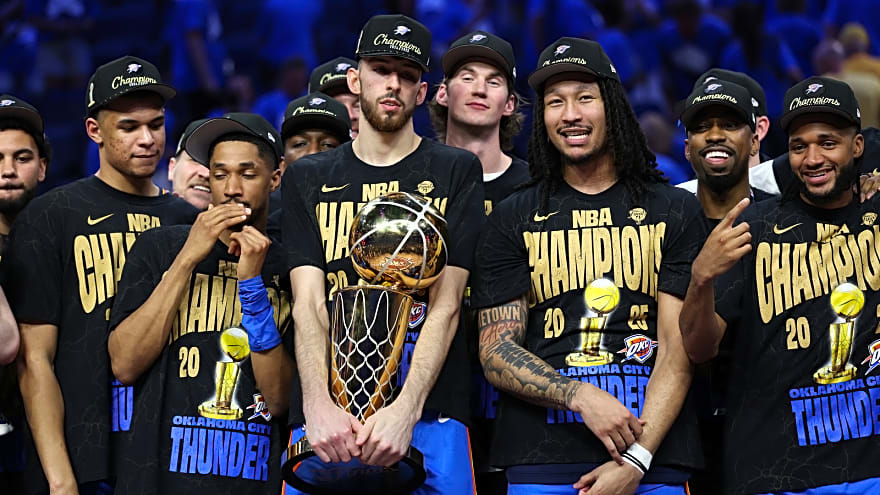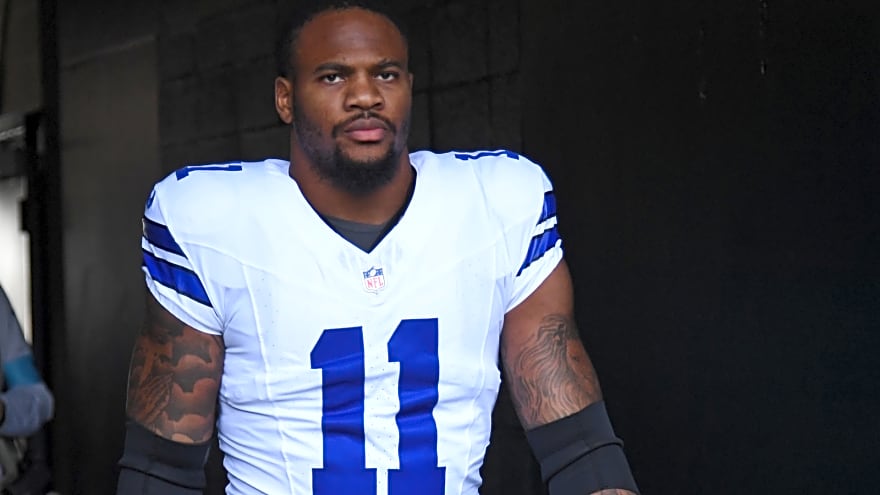
After months of legal battles and regrouping, Oregon State and Washington State have made substantial progress in rebuilding the Pac-12.
After adding Boise State, Colorado State, Fresno State, San Diego State, Utah State, and Gonzaga as new members, the Conference inked media deals with ESPN, CBS, and The CW for the 2025 football season.
The rebuilding Pac-12 must still add one more school by 2026 to retain its status as a conference in good standing.
The Conference also remains embroiled in a legal dispute with the Mountain West Conference over a “poaching fee” and team exit fees, which the MW claims it is owed. That dispute appears headed for mediation.
How will the Pac-12 fare going forward?
Time will tell, but adding six quality schools and signing an impressive media deal for 2025 has the Conference off to a propitious start.
Here’s an updated timeline for the Conference of Champions from its inception in 1915 through its latest progress.
The bullet-point summary tracks the major events in the Pac-12’s formation, expansion, realignment, collapse, and rebirth.
1915
The Conference is founded as the Pacific Coast Conference (PCC) at a meeting at the Imperial Hotel in Portland, Oregon. The charter members were California, Washington, Oregon, and Oregon State.
1916
The PCC begins play and the Conference begins hosting the annual Rose Bowl.
1917
Washington State joins the league.
1918
Stanford is added.
1922
The PCC expands to eight teams with the admission of USC and Idaho.
1924
Montana joins the Conference.
1928
The PCC grows to 10 members with the addition of UCLA.
1938
The Conference hires former FBI agent Edwin Atherton as its Commissioner.
1947
The champion of the Big Ten becomes the designated Rose Bowl opponent for the Pac-12 Champion.
1950
Montana departs to join the Mountain States Conference.
1958
California, USC, UCLA, and Washington become embroiled in “pay-for-play” scandals.
1959
The 1958 scandals lead PCC to disband; California, USC, UCLA, and Washington form a new conference called the Athletic Association of Western Universities (AAWU) with athletics administrator Tomas J. Hamilton as its commissioner. Stanford is added a month later.
1962
Washington State joins the Conference, which informally becomes known as the Big Six.
1964
Oregon and Oregon State are added and the conference is known unofficially as the Pacific Athletic Conference, though still officially the AAWU.
1968
The Conference formally renames itself the Pacific-8 Conference, or Pac-8 for short.
1975
Pac-8, now based in Walnut Creek, Calif., allows a second bowl team from the Conference
1978
The Conference adds Arizona and Arizona State from the Western Athletic Conference, becoming the Pacific-10 Conference or Pac-10.
1983
The Pac-10 hires long-time conference executive Thomas C. Hansen as Commissioner.
2002
The Conference’s exclusive arrangement with the Rose Bowl ends when the bowl hosts the national championship game in the Bowl Championship Series (BCS).
2009
Tom Hansen retires as the longest-tenured Division-I conference commissioner in the country, and the Pac-10 hires Larry Scott, the former head of the Women’s Tennis Association, to replace him.
2010
Pac-10 considers adding up to six teams to the Conference from among Texas, Texas A&M, Texas Tech, Oklahoma, Oklahoma State, and Colorado. The Buffaloes and Utah are extended invitations and both agree to join.
2011
The Conference is renamed the Pac-12, and former Big 12 school Colorado and former WAC school Utah begin play. To accommodate them, the Conference is divided into South and North divisions.
2012
The Conference debuts the Pac-12 Network, only the third dedicated network in the nation, and the first to completely fund and own its own network outright.
2014
The Pac-12 relocates from Walnut Creek to San Francisco.
2021
Larry Scott’s tenure as commissioner ends. George Kliavkoff, the former president of entertainment and sports for MGM Resorts International is hired to take his place. Soon after, the Pac-12, ACC, and Big Ten announced the formation of a nonbinding “historic alliance.”
2022
— USC and UCLA announce their departure from the Pac-12 to the Big Ten Conference beginning with the 2024–25 academic year.
— Reports began circulating that Commissioner Kliavkoff had visited San Diego State University and SMU campuses for tours. This was allegedly part of the conference’s vetting process for expansion.
— San Diego State sent the Mountain West Conference a letter notifying them of their impending departure. The Pac-12, however, was adamant about securing a media rights deal before expanding.
— Without an incoming offer before a June 30, 2023 deadline, San Diego State had to rescind its intention to leave the Mountain West.
2023
— Colorado announces its return to the Big 12 on July 27.
— On August 4, Oregon and Washington announce that they will be following UCLA and USC to the Big Ten conference for the 2024 season.
— Later that day, Arizona, Arizona State, and Utah announce that they will be leaving for the Big 12 Conference starting in 2024.
— On September 1, the ACC presidents and chancellors vote to add Stanford and Cal (along with SMU) beginning in 2024.
— On September 11th, Washington State and Oregon State take the Pac-12 and Commissioner George Kliavkoff to court in Whitman County, Washington, obtaining a temporary restraining order blocking the Conference’s 10 departing schools from holding a meeting and a potential vote of their presidents.
— On November 14, Judge Gary Libey of the Whitman County, Washington Superior Court rules in favor of the two schools. The University of Washington (UW) files an emergency motion to keep the two schools from gaining full control of the conference for the 2023-24 academic year
— A Washington Supreme Court commissioner grants UW’s motion on November 28.
— The motion is overturned on December 15 by the Washington State Supreme Court, giving Oregon State and Washington State sole control of the Pac-12. The decision prevents the departing schools from voting on conference matters.
— On December 5, 2023, Oregon State and Washington State announces that they have entered into a football alliance with the Mountain West Conference for the 2024 season to play three home games and three away games against MWC opponents.
— The West Coast Conference (WCC) invites both teams as affiliate members for basketball and most other non-football sports. Both partnerships are expected to last from the fall of 2024 to the spring of 2026.
— The remaining two conference members announce plans to continue using the Pac-12 name and branding for at least the 2024–25 academic year.
2024
— On February 19, the Pac-12 Board of Directors announces Teresa Gould as the first woman commissioner of a then-Power Conference to replace Kliavkoff, effective March 1.
— Soon after, Kliavkoff unfollows nearly everyone associated with his time as Pac-12 Commissioner and changes his X/Twitter bio to read “Fishing…”
— In early May, Washington State and Oregon State universities sign football TV deals with The CW and Fox.
— In June, the Pac-12 Network announces that programming would only be available through the last weekend of the last weekend of the month.
— On July 21, the Conference holds an intimate and unusual two-team media day in Las Vegas billed as “After Hours with the Beavs & Cougs.”
— On September 12th, the Conference announced the addition of four new member schools: Boise State, Colorado State, Fresno State, and San Diego State, all from the Mountain West, beginning with the 2026 season.
— On September 24, the Pac-12 adds Utah State, bringing their total football membership to seven. That same day, the Conference files a federal lawsuit against the Mountain West Conference, claiming that its “poaching penalties are unlawful and unenforceable.”
— On September 30, Gonzaga joins the Conference as a full member, even though they do not play football.
— In November, the Mountain West files a motion to dismiss the lawsuit filed by the Pac-12.
— On December 16, Colorado State and Utah State file a separate lawsuit against the Mountain West over their exit fees.
— On December 18, Boise State joins the lawsuit filed by CSU and Utah State.
2025
—On February 27, the Mountain West and the Pac-12 agree to informal mediation, along with Boise State, Colorado State, and Utah State, in hope of settling the ongoing lawsuits among them.
— On March 14, both conferences agree to a 60-day stay of their case in California to discuss mediation options.
— On April 28, the Pac-12 announces its television partnerships for the 2025 football season, with The CW, ESPN, and CBS combining to show the 13 home games involving Oregon State and Washington State.
More must-reads:
- Archie Manning drops bombshell prediction on Texas QB grandson
- NFL Hall of Famer reveals why he chose to join Deion Sanders' Colorado coaching staff
- The '2024-25 NFL passing-yard leaders' quiz
Breaking News
Trending News
Customize Your Newsletter
 +
+
Get the latest news and rumors, customized to your favorite sports and teams. Emailed daily. Always free!
TODAY'S BEST
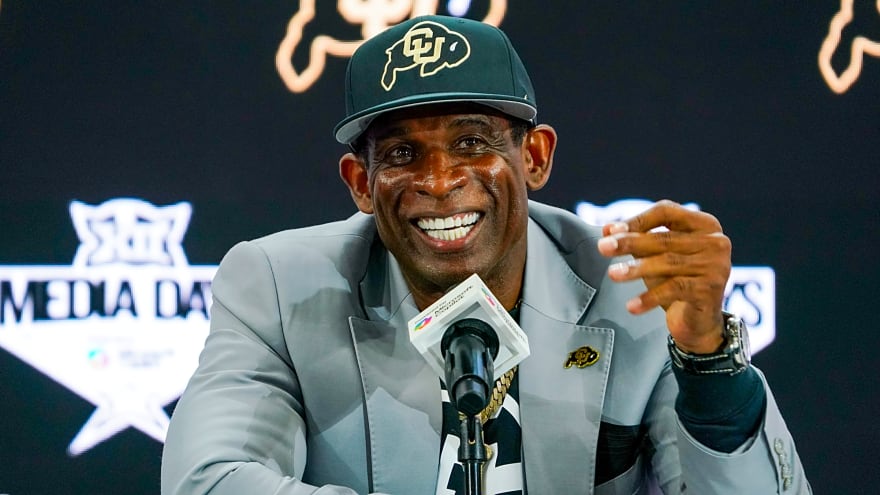
NFL Hall of Famer reveals why he chose to join Deion Sanders' Colorado coaching staff

Cardinals announce Nolan Arenado news
The St. Louis Cardinals have fallen out of playoff contention in recent weeks, sitting at 58–58, and have shifted toward a clear rebuild after trading All-Star closer Ryan Helsley at the deadline. One name that surfaced in trade rumors but will remain with the club through season’s end is veteran third baseman Nolan Arenado. Now in his fifth season with St. Louis after being acquired from the Colorado Rockies ahead of 2021, the 34-year-old is enduring the worst offensive stretch of his 13-year career. Through 96 games, Arenado is hitting just .235 with a .660 OPS and 10 home runs — all of which are career lows for a full season. Cardinals provide Nolan Arenado update To make matters worse, Arenado was placed on the 10-day injured list on Aug. 1 with a right shoulder injury. Ahead of Wednesday’s series finale against the Dodgers, manager Oliver Marmol announced that Arenado will report to Jupiter, Florida, on Friday to begin a rehab assignment. The club hopes that once his shoulder strengthens, he’ll be able to return to game action soon. Arenado’s legacy remains one of the game's best Despite the down year, Arenado’s career remains incredible. Between his time with the Rockies and Cardinals, he’s earned eight All-Star selections, 10 Gold Gloves — cementing his status as one of the best defensive third basemen ever — and five Silver Slugger awards. Since joining St. Louis five seasons ago, he’s batting .266 with a .779 OPS, 116 home runs and 415 RBI, helping the team reach the postseason in 2021 and 2022.
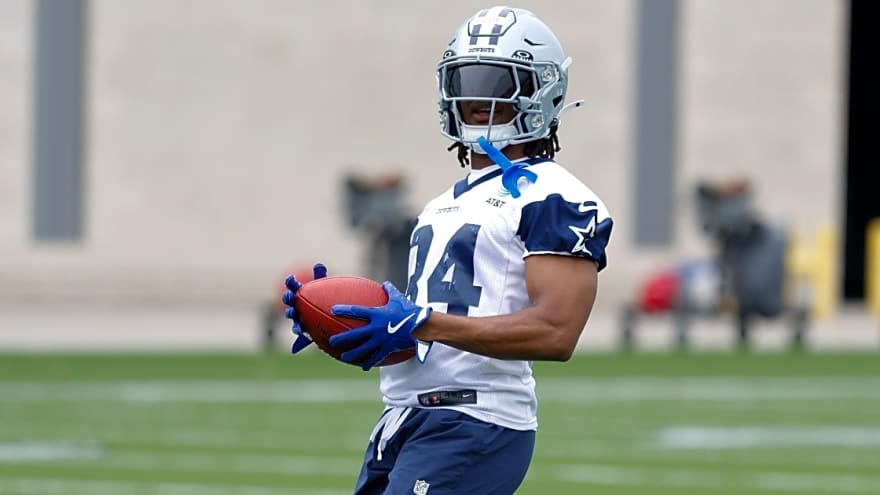
Jaydon Blue injury update: Major news emerges on Cowboys RB after Thursday practice exit
According to Nick Harris of The Fort Worth Star-Telegram, Dallas Cowboys running back Jaydon Blue suffered a bone bruise in his heel on Thursday. Blue was stepped on during practice, initially looking at an ankle sprain. Thankfully, the MRI came back with some positive news. “Cowboys RB Jaydon Blue’s MRI revealed a bone bruise in his heel after it was stepped on in today’s practice, according to a @startelegram source,” Harris said via X. “No ankle sprain. Good news for the young back who has emerged as an offensive playmaker in camp.” Blue previously told Harris that an ankle injury was what he suffered. Questions about the running back’s availability for Saturday’s preseason game against the Los Angeles Rams are now present. Something to watch as kickoff is scheduled for 6 p.m. CT from SoFi Stadium. Dallas took Blue in the fifth round of the 2025 NFL Draft, hoping to address its running back situation. Blue played his college ball inside the Lone Star State, suiting up for the Texas Longhorns. Plenty of guys at the position have come out of Austin and found quick success. Blue is hoping to be the next one. For now, there is an injury for him to deal with. No exact timeline has been provided per a report or by a team official. Hopefully, Blue is able to get things cleared up quickly and get his first taste of the NFL before Sept. 4’s season opener against the Philadelphia Eagles. More on Jaydon Blue, Cowboys running back situation Running back was a position the Cowboys needed to desperately figure out this offseason. Rico Dowdle, the team’s leading rusher, was no longer on the roster. Behind Dowdle, Dallas did not have much else. A nice mix of veteran presence and youngsters was needed. Javonte Williams and Miles Sanders provide the former, while Blue was a part of the draft class alongside Phil Mafah. A combination of those four figures to be on the opening night roster. Exactly how head coach Brian Schottenheimer splits up the carries is not yet known. Blue’s injury certainly does not help the situation. Cowboys players, in general, have been going down throughout training camp thus far. Making sure everyone is healthy will be critical heading into the season. Especially an explosive back like Blue, someone who can change the outcome of any game in just the snap of your fingers.

Padres already demoting one of their trade-deadline acquisitions
The Padres announced they’ve optioned JP Sears to Triple-A El Paso. They recalled reliever Sean Reynolds and will go with a nine-man bullpen in the short term. Sears will spend at least 15 days in the minors unless he’s brought up to replace a player going on the injured list. San Diego acquired Sears alongside Mason Miller in last week’s massive deadline deal. The 29-year-old southpaw made his team debut Monday night. He allowed five runs in as many innings on 10 hits and a walk against the Diamondbacks. Sears took the loss in a 6-2 defeat. He’d carried a 4.95 earned run average over 22 starts with the A’s. Monday's performance pushed his ERA to 5.12 across 116 innings. It’s a bottom-10 mark among pitchers to log at least 100 frames. Sears had the highest home run rate among that group, offsetting his nearly league-average 20.3% strikeout rate and solid 6% walk percentage. This is the first time in two-and-a-half years that Sears heads to the minors. He broke camp with the A’s in 2023 and has been in the majors since then. Sears has also avoided the injured list for that entire time. As a result, he’s tied for fifth in MLB with 87 starts since the beginning of the ’23 season. The durability is the big selling point, as his production (4.62 ERA/4.56 SIERA) over that stretch is that of a fifth or sixth starter. The demotion shouldn’t have any impact on Sears’ service trajectory. He has already surpassed the three-year mark and will qualify for arbitration next winter. He’s under team control for three seasons beyond this one. While he’ll probably be back up at some point this year, it may require an injury elsewhere in the rotation. San Diego optioned Randy Vásquez over the weekend. They have a four-man rotation of Dylan Cease, Nick Pivetta, Yu Darvish and deadline acquisition Nestor Cortes. Darvish and Cortes will get the ball for the next two outings. San Diego is off Thursday and could turn back to Pivetta and Cease on extra rest for their first two games of the weekend series against the Red Sox. That’d point to the series finale on Aug. 10 as Michael King’s return date. King threw 61 pitches in what is expected to be his final rehab start on Sunday, via the MLB.com injury tracker. He’d be on six days' rest for his first MLB appearance since he went on the injured list in late May with a nerve problem in his throwing shoulder.

Cardinals All-Star Addresses Future; Hints Time In St. Louis Is Ending
The St. Louis Cardinals made changes this summer but the winter is going to be even more transformational. Trading away guys like Ryan Helsley, Steven Matz, and Phil Maton certainly hurt. But, these were necessary moves with the Cardinals' chances at a playoff spot just barely hanging on for dear life. The Cardinals are one game below .500 at 57-58 right now through 115 games played as of writing ahead of their showdown with the Los Angeles Dodgers on Wednesday afternoon. Sure, the Cardinals could go on some long winning streak and change the perception around the club once again. That would be great, but right now, the odds of the club making the playoffs are slim and that's why the Cardinals traded the three relievers before they could hit the open market in free agency. Once the season ends, bigger changes are coming, though. Cardinals at crossroads that will start to be answered this winter The Cardinals used the trade deadline to move on from some of the team's players heading to free agency that didn't have no-trade clauses. The Cardinals opted against trading players under team control beyond this season and guys with no-traded clauses made it clear that they wanted to stick around, including Miles Mikolas, Sonny Gray, and Willson Contreras. Nolan Arenado also reportedly didn't expand his list of approved teams from this past offseason. Of the no-trade clause guys specifically, Gray, Contreras, and Arenado still control their destiny beyond the season. Mikolas will be a free agent and spoke about his future and noted he wants to continue pitching, but made it sound like he won't be back with Derrick Goold of the St. Louis Post-Dispatch. "I want to finish strong," Mikolas said. "And I want to do my best to be a good example for the young guys. There are some young guys in here who I’ve seen from their rookie years, seen them mature and get better. Hopefully, I’ve left a little bit of an imprint on them. Show the younger guys what it’s like to go about your work – day in, day out, rain or shine. I’ll be in here tomorrow working out, busting my tail in the gym, getting my work done with the trainers, watching video, trying to get better. Bottom line: I want to finish strong and show teams that I’ve still got a lot of good baseball left in me... "I know teams look beyond that. They’ll look at everything. Teams are going to sign you after they go back and look at all of your starts and go, ‘What was the difference? Can we fix him? Can we help him? Can we do this? Can we do that?’ If my stuff is good – and the ball is coming out of my hand good – and I’m available wire to wire, that’s something. That’s something I take a lot of pride in...I’ll play as long as I can. The ball is still coming out of my hand pretty good for being almost 37. I’ll play as long as they let me." Mikolas has been with the Cardinals since 2018 and has earned two All-Star nods with the team, but his future is in question now.



